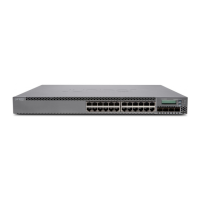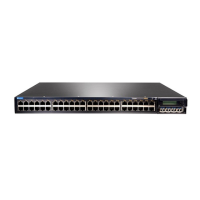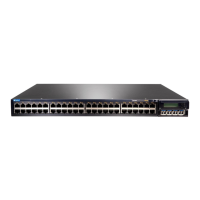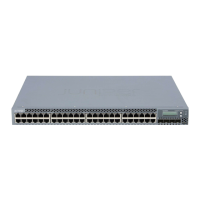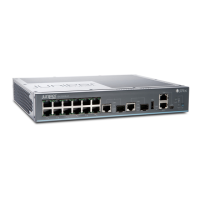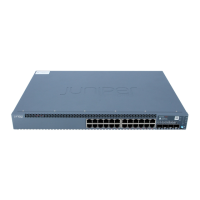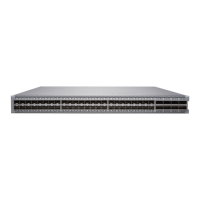Table 25: show route extensive Output Fields (continued)
Field DescriptionField Name
(IS-IS only). In IS-IS, a single autonomous system (AS) can be divided into smaller groups called
areas. Routing between areas is organized hierarchically, allowing a domain to be administratively
divided into smaller areas. This organization is accomplished by configuring Level 1 and Level 2
intermediate systems. Level 1 systems route within an area. When the destination is outside an area,
they route toward a Level 2 system. Level 2 intermediate systems route between areas and toward
other ASs.
Level
IP subnet augmented with a 64-bit prefix.Route Distinguisher
Provider multicast service interface (MVPN routing table).PMSI
Type of next hop. For a description of possible values for this field, see the Output Field table in the
show route detail command.
Next-hop type
Number of references made to the next hop.Next-hop reference
count
Indicates that the number of flood next-hop branches exceeded the system limit of 32 branches, and
only a subset of the flood next-hop branches were installed in the kernel.
Floodnexthop branches
exceed maximum
message
IP address of the route source.Source
Network layer address of the directly reachable neighboring system.Next hop
Interface used to reach the next hop. If there is more than one interface available to the next hop, the
name of the interface that is actually used is followed by the word Selected. This field can also contain
the following information:
• Weight—Value used to distinguish primary, secondary, and fast reroute backup routes. Weight
information is available when MPLS label-switched path (LSP) link protection, node-link protection,
or fast reroute is enabled, or when the standby state is enabled for secondary paths. A lower weight
value is preferred. Among routes with the same weight value, load balancing is possible.
• Balance—Balance coefficient indicating how traffic of unequal cost is distributed among next hops
when a routing device is performing unequal-cost load balancing. This information is available
when you enable BGP multipath load balancing.
via
Name of the LSP used to reach the next hop.Label-switched-path
lsp-path-name
MPLS label and operation occurring at this routing device. The operation can be pop (where a label
is removed from the top of the stack), push (where another label is added to the label stack), or swap
(where a label is replaced by another label).
Label operation
Whether the metric has been increased or decreased by an offset value.Offset
(Local only) Local interface name.Interface
Network layer address of the remote routing device that advertised the prefix. This address is used
to recursively derive a forwarding next hop.
Protocol next hop
Copyright © 2017, Juniper Networks, Inc.416
DHCP and Other System Services Feature Guide for EX2300, EX3400, and EX4300 Switches

